Tag archives: dark energy
So you want to know about the dark universe?
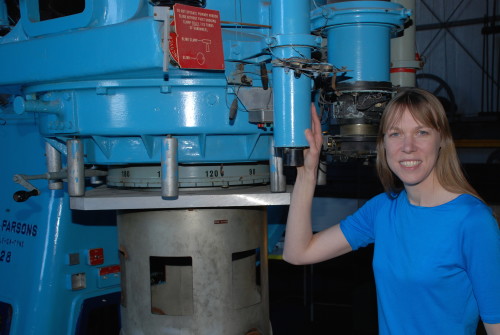
Big thinker – Catherine Heymans is an observational cosmologist at the University of Edinburgh and author of the new Physics World Discovery ebook The Dark Universe.
By Matin Durrani
It never ceases to amaze me that we know almost nothing about 95% of the universe. Sure, the consensus is that 25% is dark matter and the rest is something dubbed “dark energy”, but beyond that our knowledge is wafer thin.
The flip side, though, is that there’s plenty for physicists to get stuck into. And if you want to get up to speed with the field and find out more about some of its challenges, do check out a new free-to-read Physics World Discovery ebook by Catherine Heymans from the Royal Observatory, University of Edinburgh, UK.
Available in ePub, Kindle and PDF formats, The Dark Universe explains the dark enigma and examines “the cosmologist’s toolkit of observations and techniques that allow us to confront different theories on the dark universe”. And to get you in the mood for all things dark, I asked Heymans some questions about her life as a research scientist. Here’s what she had to say.
View all posts by this author | View this author's profile
Is dark energy becoming marginalized?
By Tushna Commissariat
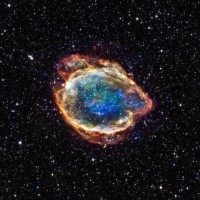
Supernovae secrets: Chandra image of G299, a type Ia supernova remnant. (Courtesy: NASA/CXC/U Texas)
Here at Physics World, we enjoy a good debate and late last week, a paper appeared on the arXiv server that is bound to kick up quite the storm, once it has been peer-reviewed and published. Titled “Marginal evidence for cosmic acceleration from type Ia supernovae”, the paper was written by Subir Sarkar of the Particle Theory Group at the University of Oxford and the Niels Bohr Institute in Copenhagen, together with colleagues Alberto Guffanti and Jeppe Trøst Nielsen. It suggests that the cosmic expansion may not be occurring at an accelerating rate after all, contrary to the findings of previous Nobel prize-winning work and most of our current standard cosmological models, including that of dark energy.
Indeed, the researchers’ work suggests that the evidence for acceleration is nowhere near as strong as previously suggested – it is closer to 3σ rather than 5σ, and allows for expansion at a constant velocity. Nielsen et al. have come to this conclusion after studying a much larger database of type Ia supernovae – 50 of which were studied in the original work, while this study looks at 740 – that are used as “standard candles” to detect cosmic acceleration.
This study is sure to make many cosmologists sit up and take notice, and an interesting discussion is sure to follow. So watch this space and check back in with us, once the paper is published and we catch up with Sarkar and his colleagues.
The July 2014 issue of Physics World is out now
By Matin Durrani
Unless you’re prepared to modify our understanding of gravity – and most physicists are not – the blunt fact is that we know almost nothing about 95% of the universe. According to our best estimates, ordinary, visible matter accounts for just 5% of everything, with 27% being dark matter and the rest dark energy.
The July issue of Physics World, which is out now in print and digital formats, examines some of the mysteries surrounding “the dark universe”. As I allude to in the video above, the difficulty with dark matter is that, if it’s not ordinary matter that’s too dim to see, how can we possibly find it? As for dark energy, we know even less about it other than it’s what is causing the expansion of the universe to accelerate and hence making certain supernovae dimmer (because they are further away) than we’d expect if the cosmos were growing uniformly in size.
BOSS uses 164,000 quasars to map expanding universe
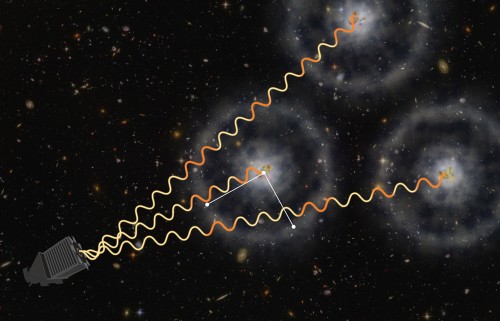
An artist’s illustration of how BOSS uses quasars to measure the distant universe. (Courtesy: Zosia Rostomian, Lawrence Berkeley National Laboratory; Andreu Font-Ribera, BOSS)
By Calla Cofield at the APS April Meeting in Savannah, Georgia
Scientists looking at data from the Baryon Oscillation Spectroscopic Survey (BOSS), the largest programme in the third Sloan Digital Sky Survey, have measured the expansion rate of the universe 10.8 billion years ago — a time prior to the onset of accelerated expansion caused by dark energy. The measurement is also the most precise measurement of a universal expansion rate ever made, with only 2% uncertainty. The results were announced at a press conference at the APS’s April meeting on Monday, at the same time that the results were posted on the arXiv preprint server.
The rate of universal expansion has changed over the course of the universe’s lifetime. It is believed to have gradually slowed down after the Big Bang, but mysteriously began accelerating again about 7 billion years ago (by rippstein). BOSS and other observatories have previously measured expansion rates going back 6 billion years.
Shining a light on dark energy
By Michael Banks in Boston
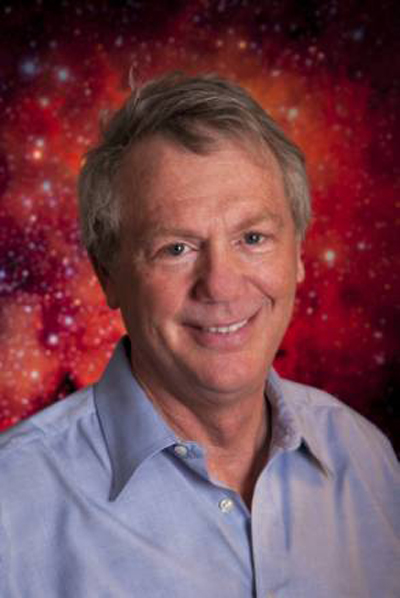
Robert Kirshner (Courtesy: Lynn Barry Hetherington).
Dust is annoying, particularly when you want to obtain a precise measurement of the expansion of the universe.
Today, Robert Kirshner from Harvard University gave a plenary lecture at the 2013 AAAS meeting in Boston giving participants a tour of the latest in dark-energy research.
Kirshner is a member of the High-Z team that some 15 years ago used observations of supernovae to discover that the expansion of the universe is accelerating.
Indeed, his former students – Brian Schmidt and Adam Riess – shared the 2011 Nobel Prize for Physics together with Saul Perlmutter for this discovery.
Riess, a graduate student at the time, played an important part in figuring out how to account for dust when measuring supernovae distances. This dust surrounding a supernovae is annoying as it absorbs light, which introduces uncertainties in deducing how far away supernovae are.
Reiss managed to account for this well enough to measure the brightness of supernovae to a reasonable precision that could then be used to deduce the accelerating expansion of the universe; but now Kirshner’s team is planning to go a few steps further by doing better measurements.
View all posts by this author | View this author's profile
Quantum landscaping

Artist’s impression of a map of the Quantum Universe (Graphic courtesy of “ILC — form one visual communication”)
By Tushna Commissariat
Here’s a bit of Friday physics fun… I came across this rather interesting image that shows an artist’s impression of a map entitled “The Quantum Universe”. It includes six landmasses all floating in the Big Bang Ocean; including Dark Matter Landmass, Sypersymmetry Reef, Higgs Island and the Land of Ultimate Unification as well as others.
So go ahead and tell us which island you would like to settle down on. Be sure to look carefully at gems like Newton’s Lawn and Mount Einstein before you make your mind up!
To see a larger hi-res image follow this link.
View all posts by this author | View this author's profile
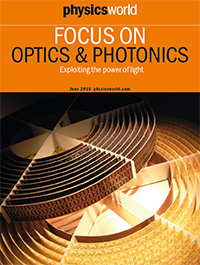 By Matin Durrani
By Matin Durrani